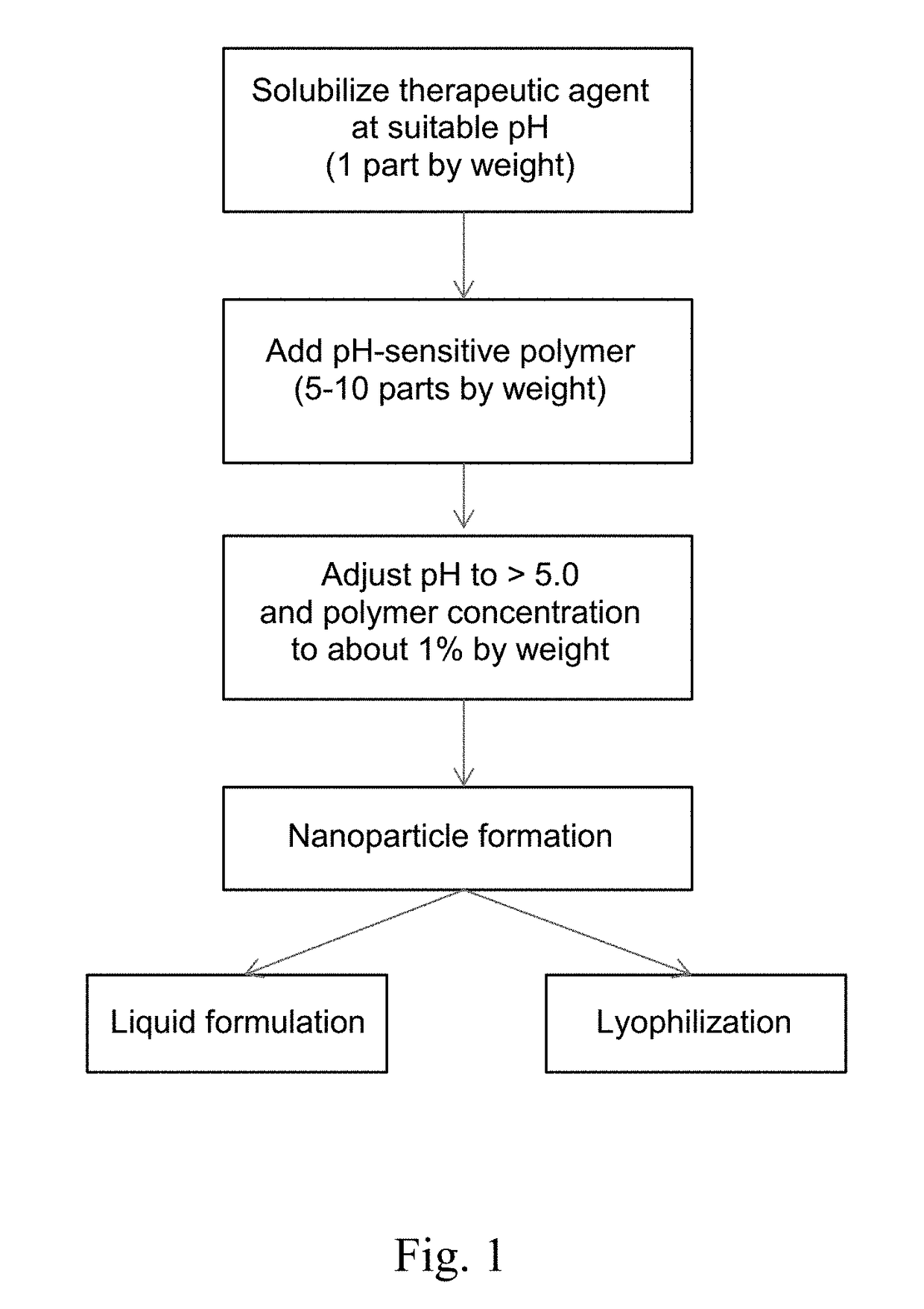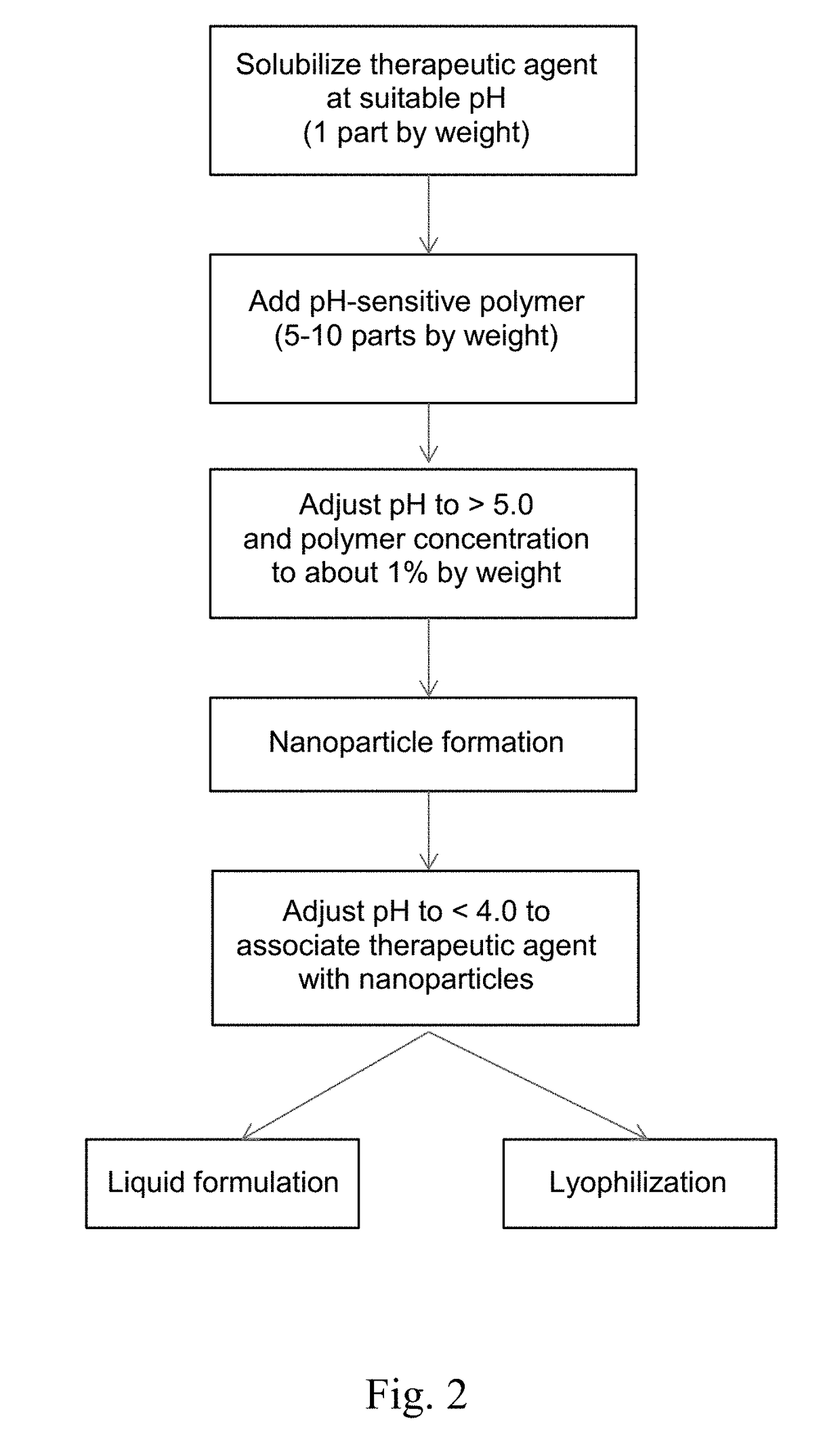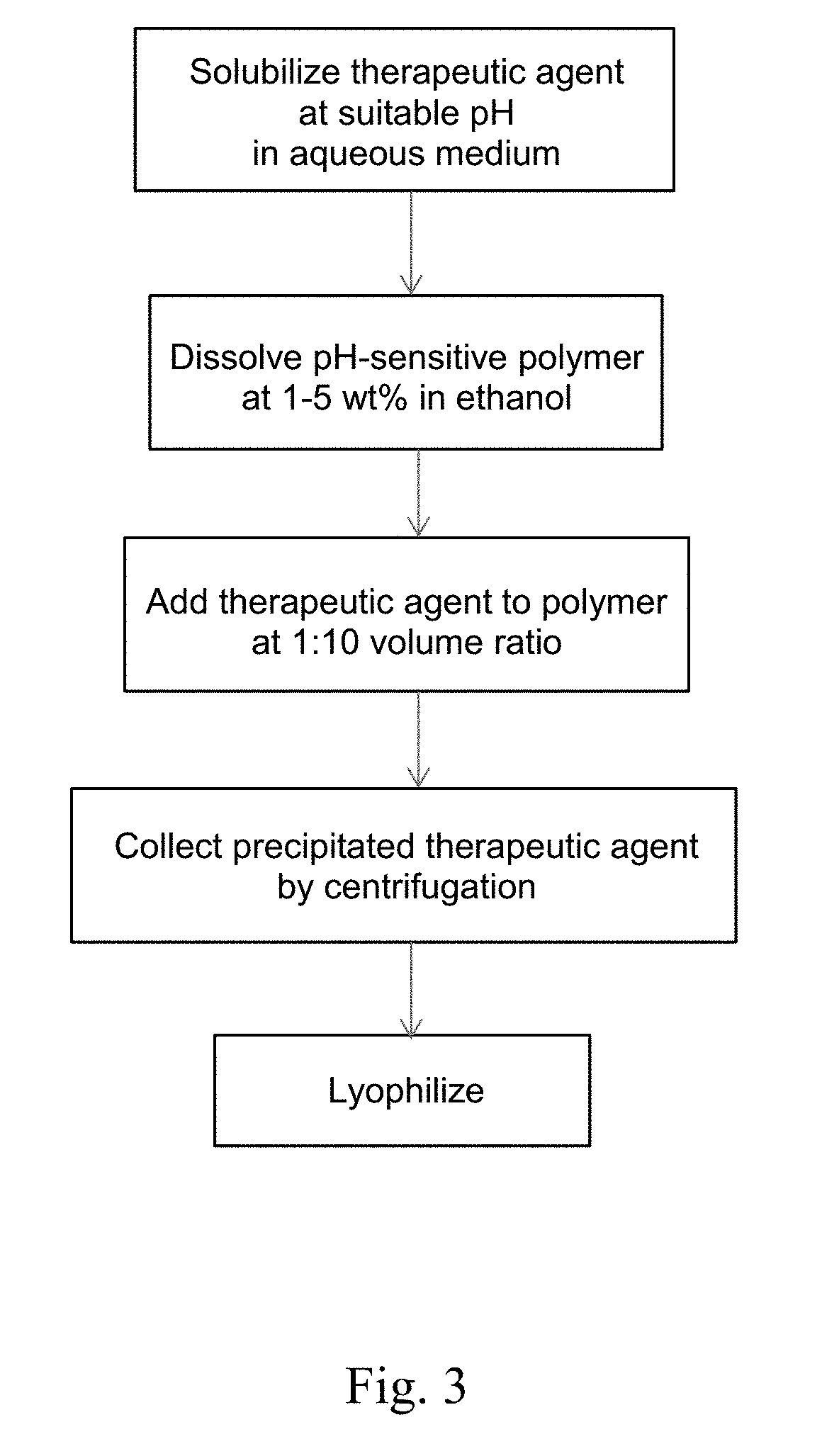Formulations for Enteric Delivery of Therapeutic Agents
a therapeutic agent and formulation technology, applied in the field of formulations for enteringic delivery of therapeutic agents, can solve the problems of inability to deliver these agents orally, diabetes is a critical global problem, and the therapeutic protein or peptide can be chemically or physically unstable, so as to maintain the activity of the therapeutic agent, reduce the ph of the solution, and improve the effect of bioavailability
- Summary
- Abstract
- Description
- Claims
- Application Information
AI Technical Summary
Benefits of technology
Problems solved by technology
Method used
Image
Examples
example 1
Materials and Methods
[0137]Fasted State Simulated Gastric Fluid (FaSSGF). Human FaSSGF was obtained from Biorelevant (London, UK). It contained 0.08 mM sodium taurocholate, 0.02 mM lecithin, 34.2 mM sodium chloride, and 25.1 mM hydrochloric acid. The pH of the solution was 1.6.
[0138]Fasted State Simulated Intestinal Fluid (FaSSIF). Human FaSSIF was obtained from Biorelevant (London, UK). It contained 3 mM sodium taurocholate, 0.75 mM lecithin, 105.9 mM sodium chloride, 28.4 mM monobasic sodium phosphate, and 8.7 mM sodium hydroxide. The pH of the solution was 6.5.
[0139]Solvent-Free Method. A therapy agent was dissolved and a pH-sensitive polymer was suspended in an acidic aqueous medium in which the therapeutic agent is soluble. Then, the pH was raised to 5.5 or higher by the addition of a solution containing 3 mM sodium taurocholate, 0.75 mM phosphatidylcholine, 106 mM sodium chloride, and 28 mM sodium phosphate, or the pH was raised to above 5.0 using a buffer such as acetate, suc...
example 2
Solubility of Insulin Nanoparticles Following Lyophilization
[0147]The composition of insulin Formulation 1 is described in Table 2. The formulation was lyophilized, and 10 mg of the lyophilized powder (containing 1 mg insulin) was then reconstituted with 1 mL of the pH 6.5 buffer, forming nanoparticles. 100 μL of 1N HCl was then added to the solution, thereby precipitating particles containing polymer (EUDRAGIT L 100) and insulin. HPLC analysis of the supernatant after centrifugation did not show any insulin, even though insulin is highly soluble in HCl, demonstrating that the insulin had become tightly associated with the particles. Nevertheless, when the precipitate after centrifugation was solubilized in PBS at pH 7.2, the previously precipitated polymer became suspended, allowing for the complete recovery of insulin (1mg) in solubilized or suspended form in PBS based on RP-HPLC analysis.
example 3
Size Distribution and Solubility of Insulin Nanoparticles
[0148]Two 5-ml samples of Formulation 2 were adjusted to pH 2.5, which caused microparticle precipitation. The samples were then centrifuged at 3000 rpm to sediment the particles. The supernatant was analyzed with HPLC, which showed no insulin, indicating tight association of insulin with the precipitated particles. To the pellet of each sample, 5 mL of either FaSSIF or FaSSGF was added to resuspend the particles at pH 6.5 (FaSSIF) or pH less than 2.0 (FaSSGF). The insulin release profiles were monitored, and the data are shown in FIG. 4. The data indicate that insulin was released FaSSIF (pH 6.5) but hardly released in FaSSGF (acidic pH). The size of the resuspended particles was analyzed using a Zetasizer (Malvern Instruments, Malvern, UK) and the software provided by the manufacturer. The resuspended particles had a Z average diameter of 20.76 nm.
PUM
| Property | Measurement | Unit |
|---|---|---|
| molecular weight | aaaaa | aaaaa |
| particle size | aaaaa | aaaaa |
| mean particle size | aaaaa | aaaaa |
Abstract
Description
Claims
Application Information
 Login to View More
Login to View More - R&D
- Intellectual Property
- Life Sciences
- Materials
- Tech Scout
- Unparalleled Data Quality
- Higher Quality Content
- 60% Fewer Hallucinations
Browse by: Latest US Patents, China's latest patents, Technical Efficacy Thesaurus, Application Domain, Technology Topic, Popular Technical Reports.
© 2025 PatSnap. All rights reserved.Legal|Privacy policy|Modern Slavery Act Transparency Statement|Sitemap|About US| Contact US: help@patsnap.com



